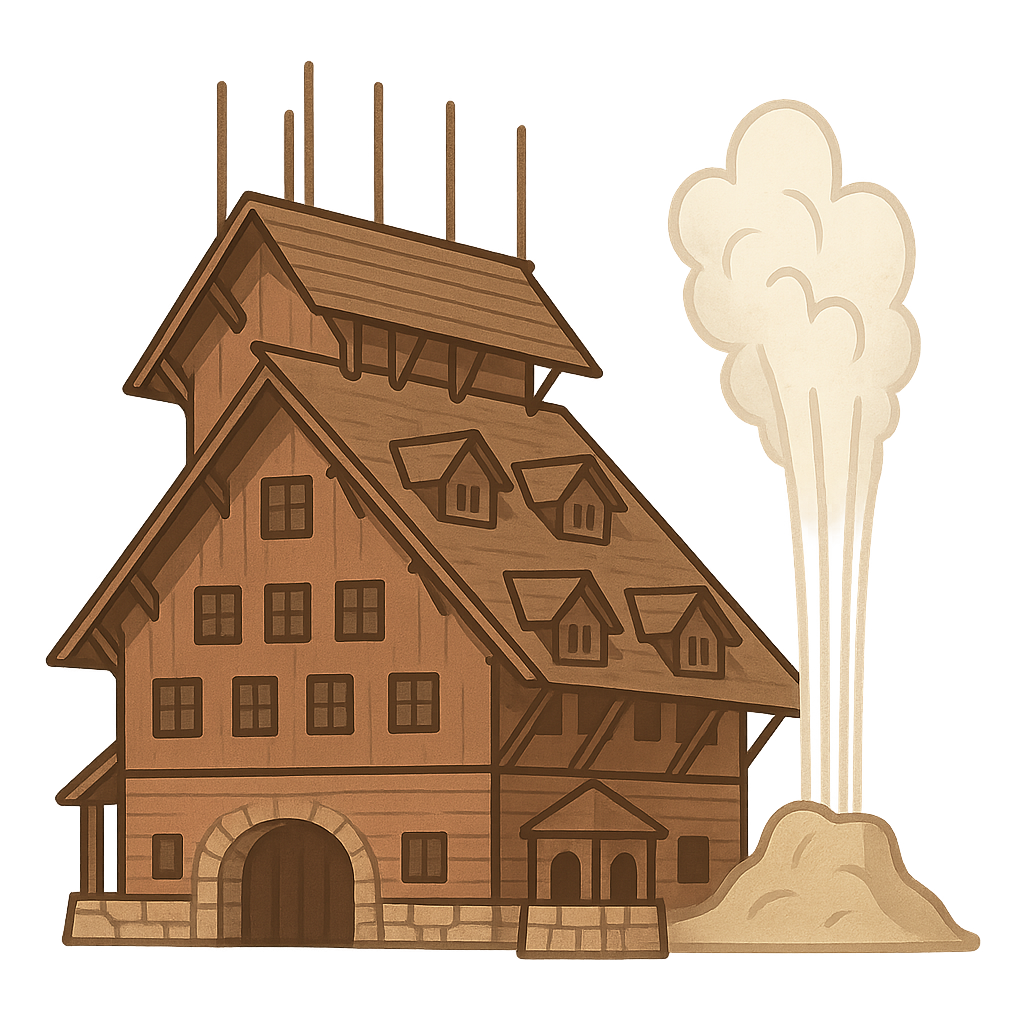The Wild Heart of the World
Listen closely. Can you hear the world breathing? It sounds like a gentle hiss of steam escaping from the earth, and a deep, rhythmic gurgle from pots of bubbling mud. It smells of sharp pine and ancient sulfur, a scent carried on the cool mountain air. If you look, you will see impossible colors swirling in pools of water too hot to touch—vibrant blues, fiery oranges, and vivid yellows painting the ground like an artist’s palette. Suddenly, the ground trembles, and a tower of boiling water erupts into the sky with a thunderous roar, a powerful and predictable greeting. I am a land of vast green forests where great herds of bison roam, their shaggy coats dusted with snow in winter and dirt in summer. I am a place carved by fire and ice, a landscape that feels both ancient and alive, a wilderness humming with untamed energy. For a long time, my existence was just a whisper, a wild rumor. But I am a promise kept, a wild heart protected for all time. I am Yellowstone National Park.
My story did not begin with a signature on a piece of paper. It began deep within the Earth, where a colossal supervolcano sleeps beneath my surface. My fiery birth was an explosion of unimaginable power that occurred around 631,000 years ago. This eruption was so immense that it collapsed the ground, forming the giant basin, or caldera, where many of my wonders now lie. After the fire came the ice. For thousands of years, massive glaciers advanced and retreated across my skin, sculpting my mountains, carving my deep canyons, and leaving behind the pristine waters of my lakes. Long after the earth cooled and the ice melted, the first people arrived, more than 11,000 years ago. Ancestors of the Crow, Blackfeet, and Shoshone nations made their homes in my valleys and forests. They understood my rhythms and respected my power. From a hard, black volcanic glass called obsidian found on my cliffs, they skillfully chipped tools and arrowheads. They saw my hot springs not just as curiosities, but as sacred places for healing and spiritual ceremonies. For them, I was not a place to be conquered or owned. I was a provider, a home, and a sacred landscape woven into the fabric of their lives.
For centuries, my existence was known only to the Indigenous peoples who lived here. But in the early 1800s, the first European-American explorers began to venture into my wilderness. A man named John Colter, who traveled through in 1807, returned with stories of a land of “fire and brimstone,” but his tales of erupting water and bubbling mud were so fantastical that many dismissed them as delusions. The whispers of my wonders persisted, but proof was needed. That proof arrived with the Hayden Geological Survey of 1871. This was not just a small group of adventurers; it was a team of scientists, artists, and photographers with a mission. Their leader, a geologist named Ferdinand V. Hayden, meticulously documented my geothermal features. An artist named Thomas Moran brought a palette of paints and captured my brilliant, otherworldly colors on canvas. And a photographer, William Henry Jackson, used his large, cumbersome camera to take pictures that provided undeniable evidence of my geysers and canyons. When they returned to Washington, D.C., their work created a sensation. For the first time, lawmakers saw with their own eyes the beauty that had been described only in tall tales. Hayden argued passionately that I was too precious to be sold off to private owners. He, along with others, proposed a radical new idea: that I should be set aside for the benefit and enjoyment of all people. Persuaded by the scientific reports, the stunning paintings, and the stark photographs, the U.S. Congress agreed. On March 1, 1872, President Ulysses S. Grant signed the Yellowstone National Park Protection Act, and with that stroke of a pen, I became the world’s very first national park.
That promise made in 1872 is one that continues to be kept every day. My wild heart beats on, a sanctuary for creatures that have been pushed out of other places. I am home to grizzly bears, elk, and the largest free-roaming herd of bison in the country. In 1995, a crucial part of my ecosystem was restored when gray wolves were reintroduced to my landscape. They brought back a natural balance that had been missing for decades, a testament to how every living thing has a vital role to play. Each year, millions of people from all over the world come to visit. Scientists study my geysers to better understand the powerful forces beneath the Earth’s crust. Families gather on benches to watch my most famous geyser, Old Faithful, send its plume of steam and water faithfully into the air. Adventurers hike my hundreds of miles of trails, seeking solitude and connection in the wilderness. I am more than just a place on a map. I am a living laboratory, a reminder of the wild world that once was, and a powerful symbol of human foresight and conservation. I am a promise to the future, a place where the wild heart of the world can beat on, for you and for everyone who comes after.
Reading Comprehension Questions
Click to see answer
